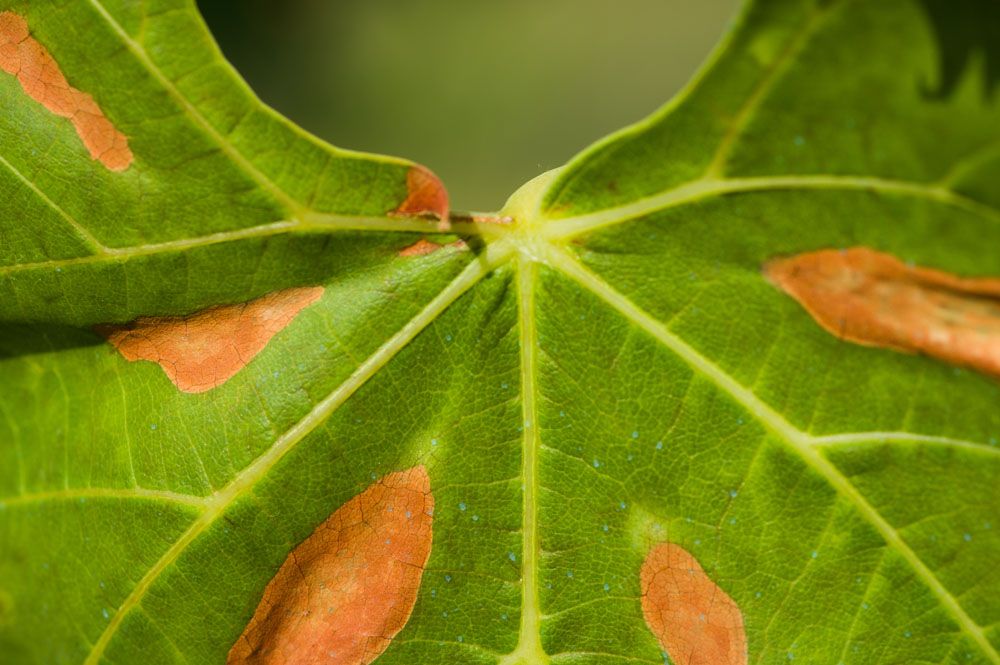
Pierce’s Disease
Pierce’s Disease on grapes
Common Name: Pierce’s Disease of Grapes
Latin Name: Xylella fastidiosa subsp. fastidiosa
Disease description:
Pierce’s Disease (PD) of grapes, particularly wine grapes, is one of the most well-known of the five illnesses produced by X. fastidiosa subsp. fastidiosa. This disease is a significant issue for Texas’ fast-developing wine grape sector.
Host Plants:
Xylella fastidiosa is a bacterium with several subspecies or strains. The host ranges of the various strains are currently being studied. Pierce’s disease strain is classified as X. fastidosa subsp. fastidiosa. Pierce’s disease has only been confirmed in grapes in Oklahoma. Alfalfa, maple, and almond are other potential hosts for Pierce’s disease strain.
Territory:
Pierce’s Disease was discovered in grapes in a home garden in Canadian County, Oklahoma, in 2008. At this time, we do not know where Pierce’s Disease is found in Oklahoma. Other Xylella fastidiosa strains that damage shade trees have been detected across Oklahoma. This suggests that the grape-infecting strain may be able to persist throughout the state.
Damages caused by Pierce’s Disease of Grapes:
Pierce’s Disease is caused by a bacterium found in plant xylem (water-conducting) cells. In late summer and fall, symptoms include marginal leaf scorch (browning), typically surrounded by a red or yellow halo. Whole leaves may become dark and fall off, leaving just the petioles connected to the plant. Fruit clusters may shrink, and shoot development may be hampered. Plants typically perform poorly and perish after a few years. Sharpshooters and leafhoppers are xylem-feeding insects that spread the illness. Long-distance travel is caused by diseased plant material.
Life History and Habits:
Bacteria develop in xylem channels in roots, stems, and leaves. In the vessels, the plant may respond by creating gum and tylose, a glue-like material. Bacteria, gum, and tyloses clog the capillaries and cause the plants to wilt. All types of xylem-feeding insects spread the bacteria from plant to plant. Sharpshooter leafhoppers Homalodisca coagulata and Oncometopia nigricans are well-known vectors, although they are far from the only ones. After eating infected plants, the insects become infective instantly, and adult insects remain infective permanently. However, the bacteria are not passed to the eggs, and the bacteria are lost once the immature stages are moult. Accidental transfer of infected vectors or dormant plants can result in long-distance dispersion. Winter circumstances with periods of frost, during which the bacteria within dormant plants die, restrict the bacteria in many places. Therefore, the bacteria create the worst issues in regions with mild winters and mature vectors that overwinter. The bacteria may also be found in various weeds and wild hosts, which raises the danger of contamination of cultivated crops. For instance, it is easier to spread from sick plum trees with high levels of bacteria in the leaves to nearby peach trees with germs concentrated mainly in the roots. In general, the low bacterial count in peach leaves restricts the spread of this crop both within itself and to other crops.
